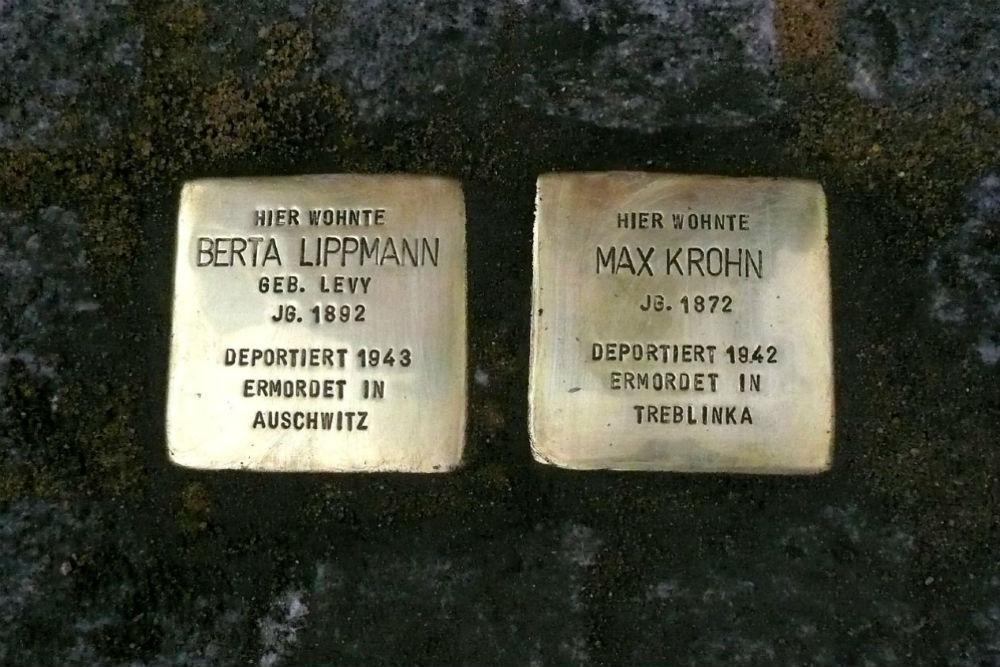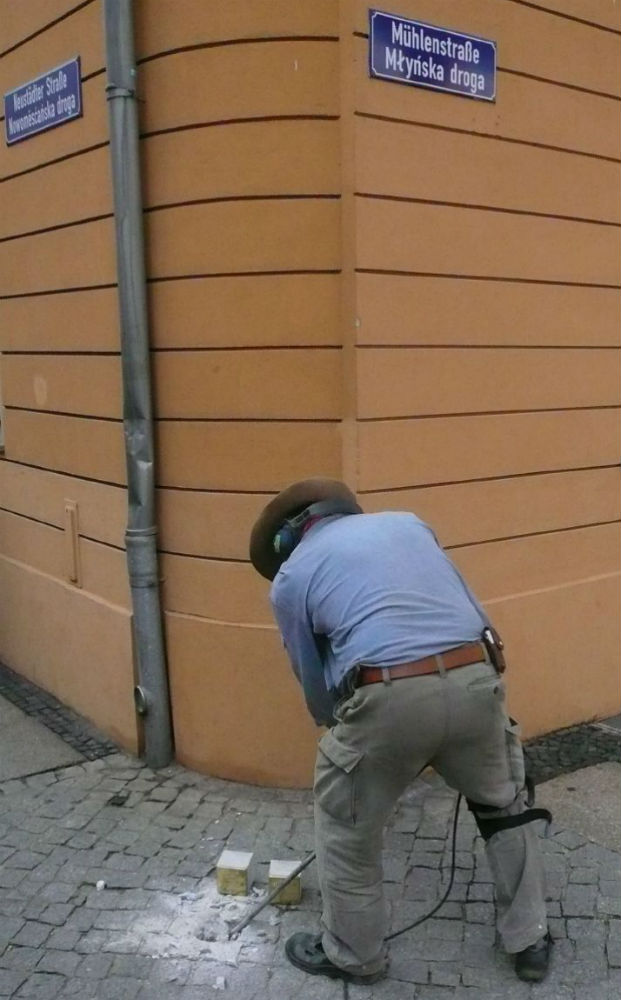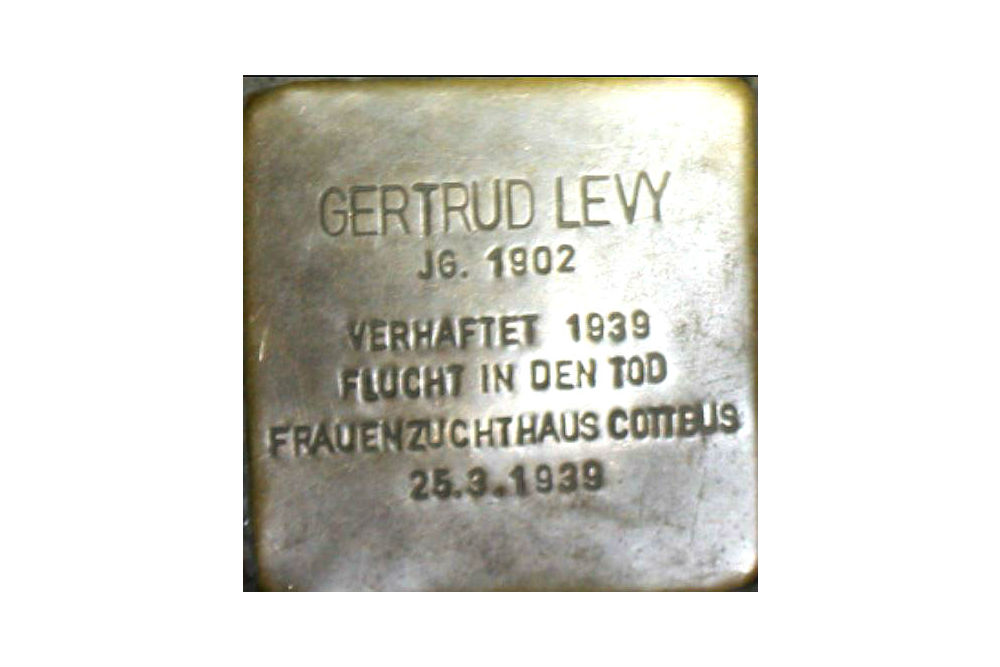Stumbling Stones Mühlenstraße 37
These small, brass memorial plaques (Stolpersteine or stumbling stones) commemorate:
* Gertrud Levy, born 1902, arrested 1939, killed herself in Cottbus Women’s Prison on 25 March 1939.
* Berta Lippmann née Levy, born 1892, deported 1943, murdered in Auschwitz.
* Max Krohn, born 1872, deported 1942, murdered in Treblinka.
Gertrud Levy had a heart and a spinal disease and was taken care of by her family. She was arrested in 1939 because she tried to help her three friends (Polish roots) who had been deported to Poland in October 1938. She sent clothes to them and sold furniture from their abandoned household, in violation of foreign exchange regulations. Gertrud was detained in the Cottbus Women’s Prison starting January 1939. Two months later, she hanged herself there.
Gertrud Levy's sister was Berta Lippmann, who was married to Julius Lippman, a businessman. The Lippmanns owned the property at this address -- Levy & Lippmann, a furniture and goods business. They lived with their son Herbert at Neustädter Straße 15 since 1919. In 1933, the business began to fail. In 1938, laws prevented Jewish citizens from running any businesses. Berta and Julius moved to Berlin in October 1941; Julius died there on 31 December 1942, and Berta was deported to Auschwitz two weeks later in a frigid cattle car. Their son Herbert managed to escape to Australia.
Max Krohn, a businessman, was 70 when he was deported on 24 or 25 August 1942 to Theresienstadt. He was held there less than a month: on 23 September he was deported to the extermination camp at Treblinka.
The stolperstein for Gertrud Levy was added later, to the left of Berta Lippmann’s. See the photo at the source below, LR Online … Lippmann family. All three Levy siblings were mudered in the Shoah: a stolperstein for their brother Max Levy is at Sandower Straße 2.
"Stolpersteine" is an art project for Europe by Gunter Demnig to commemorate victims of National Socialism (Nazism). Stolpersteine (stumbling stones) are small, 10x10cm brass plaques placed in the pavement in front of the last voluntary residence of (mostly Jewish) victims who were murdered by the Nazis. Each plaque is engraved with the victim’s name, date of birth, and place (mostly a concentration camp) and date of death. By doing this, Gunter Demnig gives an individual memorial to each victim. One stone, one name, one person. He cites the Talmud: "A human being is forgotten only when his or her name is forgotten."
Do you have more information about this location? Inform us!
Source
- Text: Fedor de Vries & Anne Palmer
- Photos: wie-wolf (1,2)
- Photos: Mareke33 (3)
- LR Online: Jewish Persecution in Cottbus … Lippmann family
- Kreisverband Cottbus
- JewishGen.org
- Yad Vashem Central Database of Shoah Victims’ Names
- Stolpersteine.eu
Nearby
Point of interest
Monument
- Soviet War Memorial Cottbus - Cottbus
- War Memorial Kiekenbusch - Kiekenbusch (Cottbus)
- War Memorial Maust - Maust
Cemetery
- Mass Grave Soviet Soldiers Cottbus - Cottbus
- Mass Grave Polish Forced Laborers - Cottbus
- German War Graves Saspow - Saspow (Cottbus)








